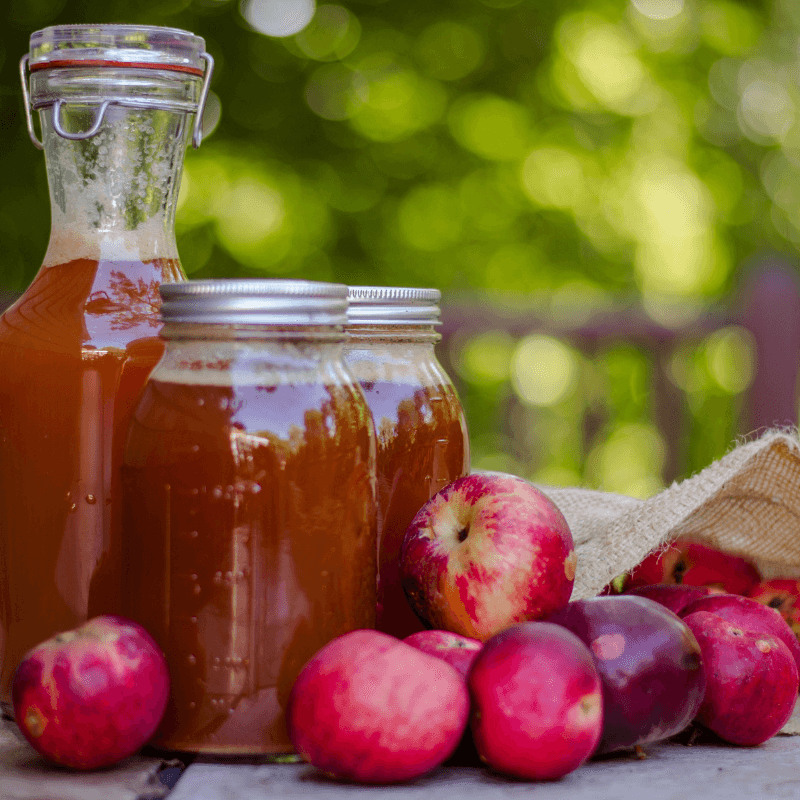Apple cider is a quintessential fall and winter treat, beloved for its rich flavors and comforting warmth. Making your own apple cider at home is not only rewarding but also a fantastic way to utilize apples from your garden or local orchard. Here’s a step-by-step guide to help you create the best apple cider, blended to your unique taste.
Equipment You’ll Need
To start, gather the following tools and materials:
- Crusher: For breaking down apples into pomace.
- Press: To extract juice from the pomace.
- Cheesecloth: For filtering out seeds and stems while keeping flavorful elements.
- Containers: Half-gallon canning jars work well for storing cider.
- Five-gallon bucket: For collecting juice.
Ensure all your utensils are made from stainless steel, plastic, glass, or unchipped enamel to avoid reactions with the apple's natural acids.
Choosing and Preparing Apples
The secret to the best apple cider lies in blending apple varieties. Different apples contribute distinct flavor profiles:
- Sweet Apples: Golden Delicious, Wickson, Red Delicious
- Sharp Apples: Granny Smith, Gravenstein, Cox’s Orange Pippin
- Bittersweet/Bitter Sharp Apples: Foxwhelp, Dolgo crab apple, Cortland
A good starting blend is 50% sweet apples, 35% sharp apples, and 15% bittersweet or bitter sharp apples. Experiment with these ratios and keep notes to perfect your recipe.
Make sure to use ripe apples, as immature or overripe fruit can negatively affect the flavor. Ripe apples should twist off the tree easily, and their seeds should be dark brown. For enhanced flavor and easier juicing, “sweat” your apples by letting them sit in a clean, dry environment for a week until they yield slightly to a firm squeeze.

Crushing and Pressing Apples
- Clean Your Equipment and Apples: Wash all utensils and apples with hot, soapy water.
- Prepare Apples: Quarter them and remove any blemishes or bruises. Avoid using apples that are rotting or decayed.
- Crush the Apples: Feed them into the crusher to create pomace.
- Press the Juice: Line the press tub with cheesecloth, add pomace, and fold the cloth over. Slowly press the apples, collecting juice in a container placed below the spout. Add pressing blocks as needed to maintain pressure.
Storing and Using Fresh Cider
Freshly pressed apple cider can be stored in the refrigerator for up to two weeks. For extended storage, consider the following options:
- Pasteurize: Heat the cider to 160–180°F to kill bacteria while retaining flavor.
- Make Hard Cider: Ferment your fresh cider for a fizzy, alcoholic version.
- Freeze: Store cider in airtight containers, leaving space for expansion.
Tips for the Perfect Apple Cider
- Blend Varieties Thoughtfully: Balancing sweet and tart apples is key to achieving a complex, delicious flavor.
- Use Fresh, Ripe Fruit: Ripe apples produce the best-tasting cider.
- Sterilize Equipment: Prevent contamination by thoroughly cleaning all tools.
- Experiment with Recipes: Adjust apple ratios and test small batches to create your signature cider.
Sustainable Practices
Don’t let the pressed pomace go to waste! Use it for compost, livestock feed, or even as an ingredient in baked goods. This not only reduces waste but also adds value to your cider-making process.
Enjoy Your Homemade Cider
Making apple cider is a labor of love, and the result is well worth the effort. Whether you enjoy it fresh, mulled with spices, or as hard cider, homemade apple cider is a delicious way to celebrate apple season.
Plant an apple tree, experiment with blends, and enjoy the fruits of your labor. Grow organic for life!


9 comments
Will pouring nearly finished cider over chopped apples(into a glass gallon fermentation jug) add a noticeable amount of flavor? Will perhaps soaking them for a few days, if they are higher quality than the juice help the final flavor? I plan on aging the cider for six months before adding Acidic Acid Bacteria and beginning the vinegar making process.
I find it hard to find a full list of apple varieties and what “category” they belong in.
I find many specific to cider apples, but most of us are stuck mostly with what comes from the store (I have a gravenstien tree, but the rest must be store bought). Most of which are definitely sweet (you listed many), but do you know where I can find a full list of all apple varieties?
Jason, here is an article I found that lists more varieties of apples for making cider. https://www.ciderschool.com/orcharding/apples/
Hope that helps.
Wheelhat, Jonathan are sweet/sharp, so they can be used in either category.
How would Jonathan apples be classified? They are really nice for baking; not sure about cider. Thanks